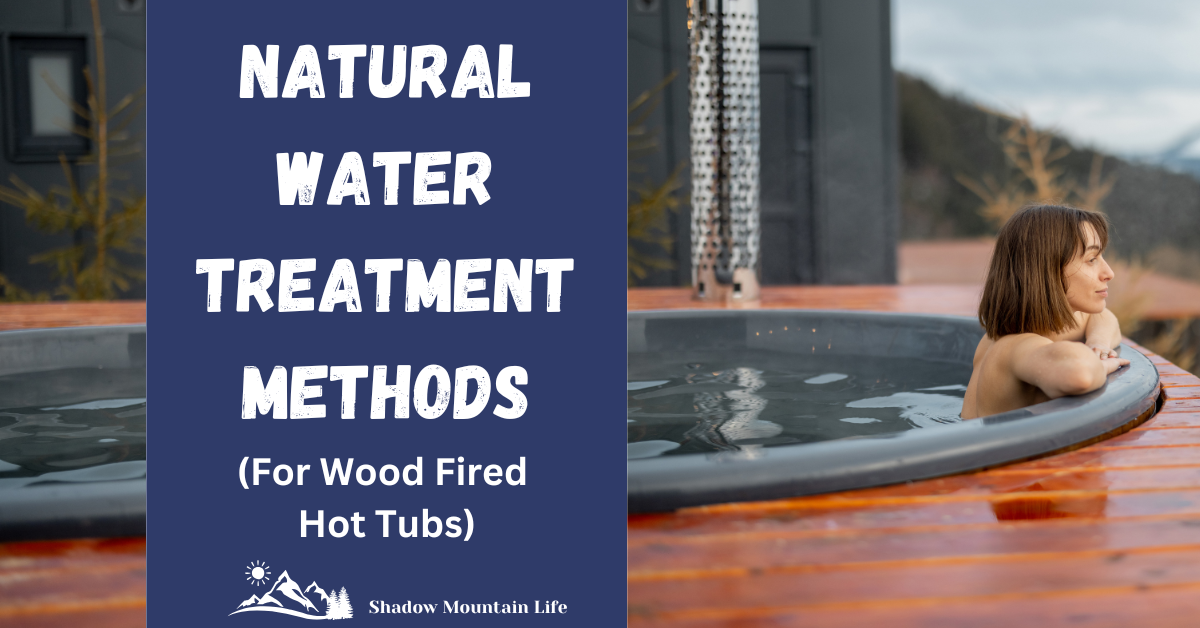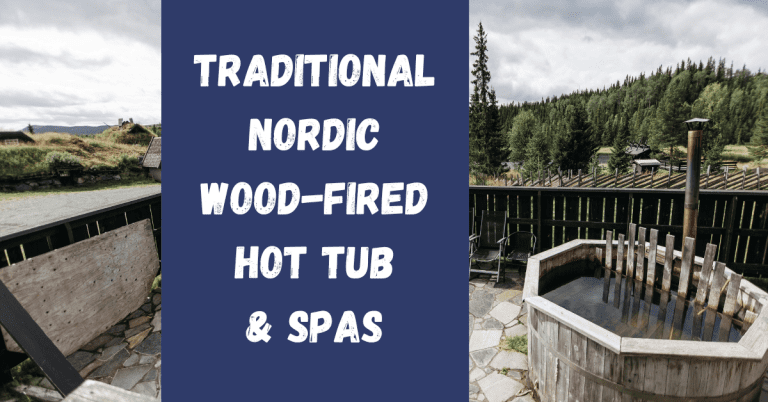Natural Water Treatments for Wood Fired Hot Tubs: Eco-Friendly Guide to Chemical-Free Maintenance
Did you know that there are natural water treatments for wood fired hot tubs that can help keep your water clean without chemicals? If you have ever gone for a hot tub soak and came away feeling itchy, dried out and nauseous from the chemicals (I sure have!), know that there is a better way to clean your wooden hot tub!
Medical Disclaimer: We are not doctors. The health information in the article is for informational and educational purposes only. Please consult your doctor or other healthcare professional when making medical decisions.
Affiliate Disclaimer: We may make a commission if you purchase something through our links. Thank you!

Understanding Wood Fired Hot Tubs
Once you understand the basics, wood burning tubs can actually be fairly simple to maintain. Unlike those chemical-heavy versions that smell like a swimming pool, wood fired tubs work with nature, not against it.
The key to natural water care in a wood burning hot tub starts with understanding the basics of water chemistry. The most important thing is maintaining proper water flow and temperature. When you heat water naturally with wood, it actually creates a more stable environment than those constantly running electric heaters. The periodic heating and cooling cycles help prevent bacteria growth naturally.
Temperature management is crucial for natural water care. Aim to keep your tub between 100-104°F (37.8-40°C) during use. Any hotter, and you’re just asking for algae problems. The sweet spot seems to be around 102°F (39°C) – warm enough to be super comfortable but not so hot that it encourages unwanted growth. Plus, maintaining a consistent temperature means you’re using less wood, which is always a bonus!
Let’s talk about circulation. Even without an electric pump, you need to ensure good water movement. You can use a simple wooden paddle to stir the water a few times a day. This makes a big difference in preventing stagnant spots where funk can develop.
Complete Wood Fired Hot Tub Guide Here
Essential Natural Cleaning Solutions for Inside the Tub
The cleaning solution you choose will also depend on the whether you have a tub with a cedar wood interior or an aluminum or vinyl interior. Those with wood or vinyl interiors will require more cleaning and scrubbing than those with aluminum interiors.
After draining the tub, a simple vinegar and water solution can be used with a gentle soft brush to scrub the inside of a cedar tub. For an aluminum interior, you can use a soft cloth, nothing abrasive, to clean the tub.
Baking soda mixed with water can also be a gentle cleaner for your tub.

Natural Water Treatments for Wood Fired Hot Tubs
Chlorine and bromine are not the only options to keeping your hot tub water clean, and there are more natural alternatives out there. Here are a few ways to keep your water clean naturally:
1. Skim the Water Surface with a Net
Using a net to remove debris is a quick and easy way to remove larger particles in the water, and if your tub is uncovered, you will want to make a point to do this daily.
2. Keep Tub Covered When Not in Use
Keeping the tub covered not only helps with heat maintenance, but it also keeps out leaves, dirt and debris in the air. In the winter, a good, insulated cover is especially important to retain heat.
3. Empty the Tub More Often
Obviously, you can always empty your tub and replace with fresh water every 3-4 soaks, however, this is not always practical and it’s not ideal. However, it is a way to keep your water clean without chemical treatments. If you have a way to divert the hot tub water and reuse into landscaping, so much the better.
Note: If your fill source is salt water, like the ocean, you can extend the amount of time you keep your water before changing it as the salt preserves the water longer. Alumitub wood fired hot tubs discusses this in more detail over at their site.
4. Shower Before Entering the Hot Tub
Having your guests shower before they bathe will remove the majority of body oils, lotions, and dead skin before it reaches the hot tub. Keep a small bucket of water by the tub for rinsing of feet before getting in as well.
5. Check Your Water pH Regularly and Adjust
Your water pH is super important. Too acidic and it can irritate your skin and damage the wood and components of your tub. Too alkaline and deposits can occur in the wood. A simple pH test strip kit will give you your answers, and in a pinch, you can adjust your pH by either adding baking soda to the water (to make more alkaline) or vinegar (to make more acidic), however these are not long-term solutions. You want your tub pH to be between 7.2-7.6.
6. UV Light
A simple UV light system can help prevent microorganisms from reproducing or even kill them.
7. Grapefruit Seed Extract
This one may sound strange, but yes, you can use grapefruit seed extract as a sanitization method as it has antiviral, antibacterial and antifungal properties. You would use about 1 to 2 oz. for every hundred gallons of water in your tub.
8. Mineral Salt Based Products
A natural cleaner for water treatment like Ahh Natural is an eco-friendly option making it easy to drain your tub anywhere. It is 100% natural and non-carcinogenic. Backcountry Recreation offers a 1 Year Natural Water Care Kit from Ahh Natural.
9. Oxidizers
Also known as “shock” treatments for the water, this helps remove organic materials and contamination from the water.
10. Have a Filtration System
If your wooden hot tub is near an electrical outlet, you can easily run a filtration pump into your hot tub daily.
Troubleshooting Common Issues Naturally
Cloudy water in your natural hot tub can mean the water’s pH is off balance. Instead of reaching for chemicals, try using baking soda to raise pH or vinegar to lower it. Start with small amounts – about 1/4 cup per 500 gallons.
What about biofilm – that slimy stuff that can form on the wood in the hot tub? Try a mixture of white vinegar and water, applied with a soft brush. The key is getting to it early before it really sets in. Check for biofilm every week during your regular maintenance routine and pay special attention to corners and around the heating pipe.
Natural solutions might work a bit slower than harsh chemicals, but they’re so much better for your tub (and your skin)!
Natural treatment of wood fired hot tubs isn’t just about avoiding chemicals – it’s about protecting both our health and the environment. By implementing these natural solutions, you’ll be able to enjoy crystal-clear, chemical-free soaks while extending the life of your wood fired hot tub. Start with one natural method at a time, and you’ll soon discover the joy of chemical-free soaking!







